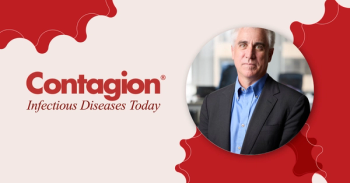
Active Genital Herpes in Early Pregnancy Linked with Autism Spectrum Disorders
Researchers have discovered that women who experience active genital herpes infection early in their pregnancy may be more likely to have a child who will later be diagnosed with autism spectrum disorder.
Mothers who experience active genital herpes infections during early pregnancy may be more likely to have offspring that will later be diagnosed with autism spectrum disorders (ASDs).
This is according to researchers at Columbia University’s Mailman School of Public Health and the Norwegian Institute of Public Health (NIPH) who revealed what may be the first immunological
Maternal infections have
“Because the cause (or causes) of most cases of ASD is unknown…both genetic and environmental factors may be implicated,” Dr. Mahic explained. She added that these factors might include “gestational infection and immune activation.”
To determine whether or not high levels of herpes antibodies play a role in subsequent ASD diagnoses and whether fetal infection might be a factor, the group evaluated a cohort of 442 mothers of children with ASD and 464 mothers of children without ASD (the control group). Dr. Mahic noted that in other types of infections, such as Toxoplasma gondii, offspring of mothers who are infected can experience latent effects even if the infection occurred before conception.
“HSV-1, HSV-2, and cytomegalovirus frequently cause persistent or latent infections,” she said, adding that the team did not believe that direct HSV-2 infections of the fetus were to blame for the ASD diagnosis since these infections are often fatal prior to birth.
The group assembled a database of characteristics of mothers and offspring as well as collected 1781 plasma samples from the mothers. Upon evaluating these samples, the researchers found high levels of antibodies to HSV-2 in 13% of the mothers in the study at the 18-month testing point. Only 12% of that subpopulation reported having herpes lesions before getting pregnant or during the first trimester, leading the researchers to conclude that most of the infections were asymptomatic even when active. The researchers also noted that mothers of children with ASD “were younger, less likely to have college- or university-level education, and more likely to be first-time mothers.” They also said that children with ASD were “more likely to be born to first-time mothers.”
The group determined that the odds ratio of increased risk of ASD in male offspring if the mother had an active HSV-2 infection during early pregnancy was 2.07. The study did not find the same association between the infection and ASD diagnosis in female offspring, but noted that the female cohort was relatively small and, therefore, there was “not enough evidence to conclude that the effect is sex-specific.”
“This is the first study to report an association between maternal anti-HSV-2 antibody levels and risk of ASD in offspring,” Dr. Mahic said.
In March 2014, the Centers for Disease Control and Prevention (CDC)
According to the
Newsletter
Stay ahead of emerging infectious disease threats with expert insights and breaking research. Subscribe now to get updates delivered straight to your inbox.























































































































































































































































































